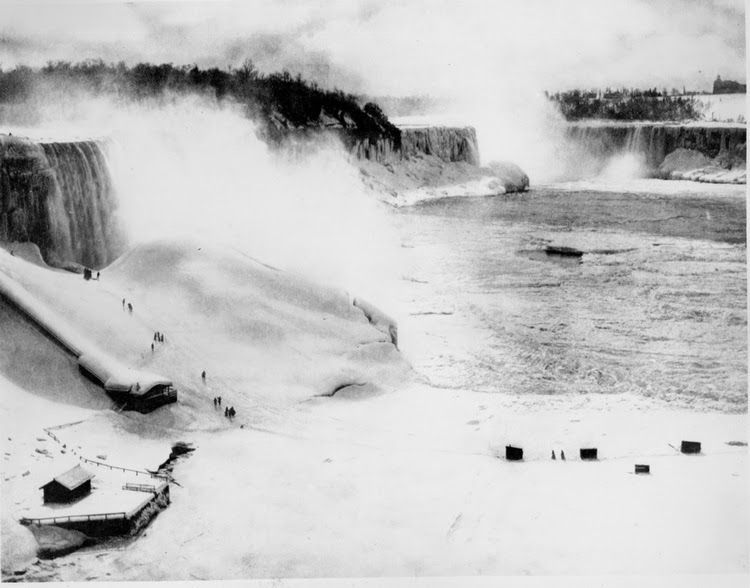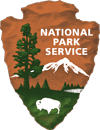
Frozen Niagara
Before various laws were established, Niagara Falls was the site of several tragedies in the wintertime.
Imagine a picturesque scene of a frozen Niagara in wintertime. Against the backdrop and mighty roar of Niagara Falls, you see a staircase leading down to the base of the Falls and a ferry service. It is so cold that the Niagara River has frozen over with snow and ice, forming a natural ice bridge that connects Niagara Falls, New York and Niagara Falls, Ontario. Warming huts and other businesses are scattered along the ice, selling food, beverages, and souvenirs to adventurous sightseers. You blink and the staircase has been replaced by an inclined railway. You blink again and an international bridge has been built across the river. At various points in history, all of these structures existed--perfectly poised in a winter wonderland but also chillingly on the brink of disaster.
In 1818, General Parkhurst Whitney built a staircase at the base of the American Falls, and two years later, he opened a ferry service that conveyed passengers across the Niagara River. In 1845, Whitney built the Incline Railway to replace the ferry stairs. The attraction was an enclosed track with two open railcars that took people from the top of the Niagara Gorge to the bottom. In 1907, one of the railway cables snapped in half, causing both cars to crash into a chalet at the base of the railway. One person died and four others were injured. The railway was soon demolished.
In 1912, a natural ice bridge collapsed and three people who could not make it safely to shore drowned in the cold and churning Whirlpool Rapids. After this tragedy, entrepreneurs were outlawed from operating businesses on the frozen river and sightseers could no longer use it as a winter playground.
In 1898, the Upper Steel Arch Bridge, later known as the Fallsview Bridge and Honeymoon Bridge, opened to pedestrians, carriages, and electric trolleys. With a span of 840 feet, the bridge was the longest such structure in the world and it offered travelers stunning views of the Falls.
In early 1938, the water and ice levels in the lower Niagara River had risen to record heights following a five–day winter thaw and three days of high winds. On January 25, nearly 100 feet of ice bent and twisted the bridge’s steel frame. Two days later, shifting ice pushed the massive bridge off its abutment and onto the ice–jammed Niagara River. Thousands of spectators had gathered to watch the bridge fall and the twisted steel “W” of the wreckage became a popular tourist attraction. As the weather grew warmer, the bridge began to break up and sink into the river. The Rainbow Bridge was built in 1941 to replace the international crossing.
Niagara Falls Heritage Area

